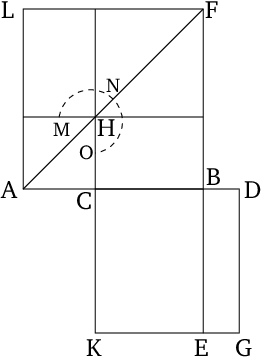Proof: By Euclid
(related to Lemma: Lem. 13.02: Converse of Area of Square on Greater Segment of Straight Line cut in Extreme and Mean Ratio)

- For if (double $AC$ is) not (greater than $BC$), if possible, let $BC$ be double $CA$.
- Thus, the (square) on $BC$ (is) four times the (square) on $CA$.
- Thus, the (sum of) the (squares) on $BC$ and $CA$ (is) five times the (square) on $CA$.
- And the (square) on $BA$ was assumed (to be) five times the (square) on $CA$.
- Thus, the (square) on $BA$ is equal to the (sum of) the (squares) on $BC$ and $CA$.
- The very thing (is) impossible [Prop. 2.4].
- Thus, $CB$ is not double $AC$.
- So, similarly, we can show that a (straight line) less than $CB$ is not double $AC$ either.
- For (in this case) the absurdity is much [greater].
- Thus, double $AC$ is greater than $CB$.
- (Which is) the very thing it was required to show.
∎
Thank you to the contributors under CC BY-SA 4.0! 

- Github:
-

- non-Github:
- @Fitzpatrick
References
Adapted from (subject to copyright, with kind permission)
- Fitzpatrick, Richard: Euclid's "Elements of Geometry"
